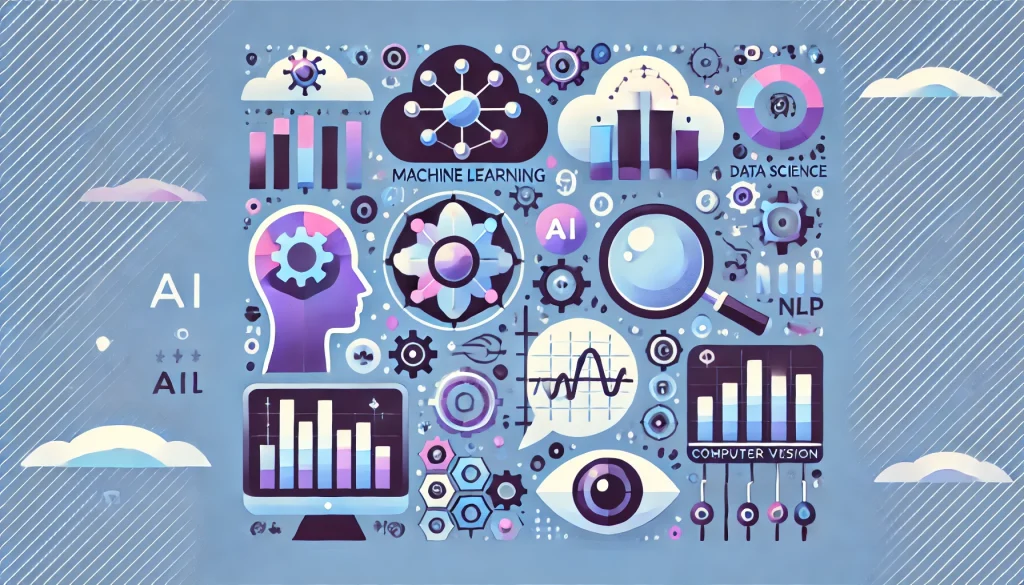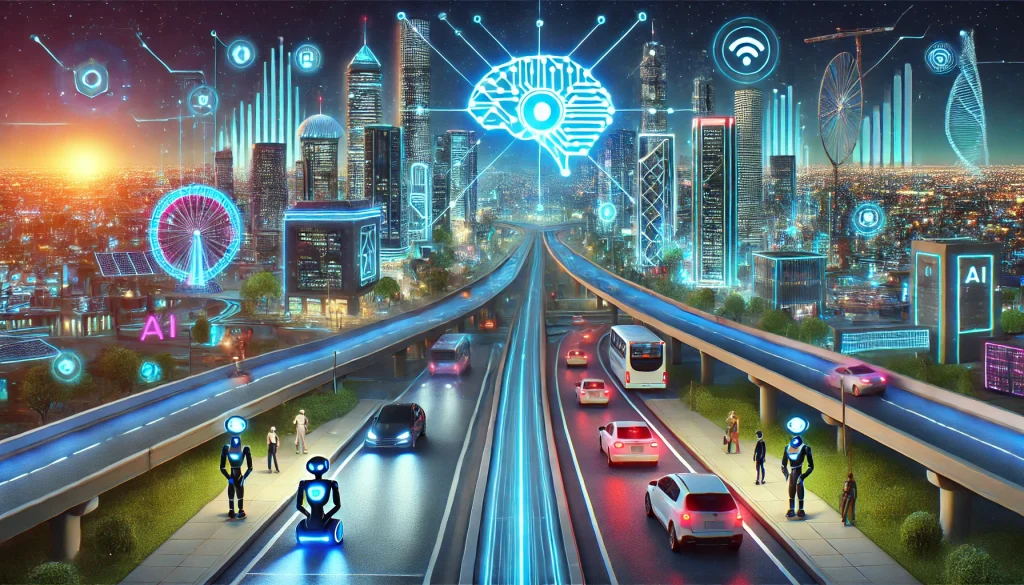The demand for artificial intelligence (AI) experts continues to surge as more companies invest in automation, data analytics, and smart systems. By 2025, AI will be even more intertwined with everyday products—powering self-driving cars, personal assistants, and advanced decision-making tools across industries. If you’re looking to start a career in AI development or transition from another field, now is an opportune time to dive in.
In this guide, you’ll learn:
- Key AI specialties to consider
- Essential technical and soft skills
- Practical steps to gain experience and build a portfolio
- Where AI is headed and how to stay on top of emerging trends

1. Why AI Development Is So Promising in 2025
1.1 Massive Industry Growth
According to industry projections, the global AI market is expected to surpass $190 billion by 2025. Startups and tech giants alike are hiring machine learning (ML) engineers, data scientists, and AI researchers to innovate faster. Moreover, industries like finance, healthcare, and logistics are increasingly adopting AI solutions—creating diverse job opportunities.
1.2 AI Everywhere
AI is becoming ubiquitous. Virtual assistants, natural language processing, and recommendation engines are mainstays of modern digital life. As hardware improves, edge AI will enable real-time inference on devices like smartphones or IoT sensors. This shift means AI developers can work on cutting-edge applications with real societal impact.
1.3 High Salaries and Global Demand
AI developers are often among the highest-paid tech professionals, with salaries that frequently outstrip standard software engineering roles. The rise of remote work further expands the job market—companies worldwide are seeking AI talent, offering flexible locations and competitive pay.
2. Core Specialties in AI
Before diving into the technical skill sets, decide which AI subfield suits your interests:
- Machine Learning Engineer
- Focus on building and deploying ML models for tasks like classification, recommendation, or regression.
- Heavy use of Python, frameworks (TensorFlow, PyTorch), and DevOps for model deployment.
- Data Scientist
- Specialize in data wrangling, statistical analysis, and advanced ML techniques.
- Typically proficient in Python, R, SQL, and data visualization tools.
- Computer Vision Specialist
- Deal with image processing, object detection, and facial recognition.
- Often use libraries like OpenCV, YOLO, or specialized frameworks like Detectron2.
- Natural Language Processing (NLP) Engineer
- Focus on text analytics, sentiment analysis, and language models (e.g., GPT-based architectures).
- Skilled in tokenization, sequence modeling, and large-scale corpora.
- Reinforcement Learning Researcher
- Explore agent-environment interactions, used in robotics, self-driving cars, or game-playing AI.
- Requires strong math background (Markov Decision Processes, reward functions) and advanced frameworks.
3. Essential Skills and Tools

3.1 Programming & Software Engineering Fundamentals
- Python: The go-to language for most AI work due to its ecosystem of libraries (NumPy, pandas, scikit-learn).
- C++ or Rust: Useful for performance-critical AI modules or embedded/edge AI.
- Git & Linux: Version control and command-line proficiency remain must-haves.
3.2 Math Foundations
- Linear Algebra: Matrices, vectors, and operations like matrix multiplication.
- Calculus: Understanding gradients and partial derivatives.
- Statistics & Probability: Vital for model evaluation, confidence intervals, or Bayesian methods.
3.3 ML Frameworks and Libraries
- TensorFlow: Popular for production environments and mobile/edge deployment.
- PyTorch: Favored by researchers and rapid prototyping.
- Hugging Face Transformers: Essential for NLP tasks and pre-trained language models.
3.4 Cloud and DevOps Knowledge
- Containers (Docker): Packaging and distributing AI applications.
- Kubernetes: Managing containerized microservices for scalable AI solutions.
- Serverless Compute: Services like AWS Lambda or GCP Cloud Functions can handle inference workloads efficiently.
3.5 Soft Skills
- Collaboration: AI projects often involve cross-functional teams (data engineers, domain experts, product managers).
- Communication: Explaining complex ML concepts to non-technical stakeholders.
- Continuous Learning: AI evolves rapidly; staying updated requires self-driven research and curiosity.
4. Building Experience and Portfolio

4.1 Hands-On Projects
Theory alone isn’t enough. Demonstrate your skills by:
- Kaggle Competitions
- Participate in open competitions to learn best practices from top data scientists.
- Build a public profile showcasing your solutions.
- Personal AI Projects
- Example: Train an image classifier on a custom dataset (e.g., identifying local flora).
- Deploy your model on a simple web app or microservice to show end-to-end capabilities.
- Open Source Contributions
- Contribute to ML libraries or niche projects (e.g., scikit-learn, PyTorch tutorials).
- Gain community recognition and real-world collaboration skills.
4.2 Online Courses and Certificates
- Coursera: Offers well-regarded Specializations from universities, including Andrew Ng’s “Machine Learning.”
- Fast.ai: Focuses on practical deep learning approaches.
- Udemy / edX: Wide variety of ML and AI topics, often with project-based structures.
4.3 Networking and Mentorship
- Local Meetups / Conferences: AI conferences like NeurIPS, ICLR, or local user groups are ideal for networking.
- LinkedIn: Connect with AI professionals, join discussions, and follow industry leaders.
- Mentor Programs: Seek mentors who can critique your projects, suggest resources, and guide career steps.
5. The Future of AI (2025 and Beyond)
5.1 Edge AI and On-Device Intelligence
As hardware improves, more AI inference will happen on devices (smartphones, IoT sensors) rather than in the cloud. Developers will need to optimize models for low latency and limited resources, possibly using frameworks like TensorFlow Lite or PyTorch Mobile.
5.2 Ethical and Responsible AI
Companies face regulatory pressure to ensure fairness, transparency, and accountability in AI systems. Tools like model interpretability frameworks (e.g., LIME, SHAP) will become standard practice. AI developers who understand ethical guidelines and bias mitigation techniques will be highly valued.
5.3 Multimodal AI
NLP, computer vision, and speech recognition are merging into multimodal AI systems. Think of a digital assistant that interprets both voice commands and visual context. Gaining cross-domain expertise (e.g., mixing text and image data) will be a unique selling point.
6. Tips for Breaking into AI
- Focus on a Specialty: While a broad understanding is good, becoming proficient in one area (e.g., NLP, computer vision) helps you stand out.
- Stay Updated: Follow AI research papers, well-known blogs, or YouTube channels (e.g., Two Minute Papers, Yannic Kilcher) to keep pace with breakthroughs.
- Leverage AI Tools: Use AI coding assistants (GitHub Copilot, ChatGPT) to speed up prototyping, but review their outputs carefully.
- Build a Targeted Portfolio: Employers want proof you can handle real tasks, so aim for at least 2–3 polished projects that demonstrate a range of skills.
Conclusion
By 2025, AI development will be at the core of countless applications, from personalized medicine to self-driving cars. The path to becoming an AI developer involves mastering a mix of programming fundamentals, math concepts, and cutting-edge ML frameworks—plus hands-on projects and an ongoing commitment to learning. Embrace challenges, seek mentorship, and showcase your passion through practical projects. With perseverance and adaptability, you’ll find yourself well-positioned to thrive in AI’s dynamic and rewarding ecosystem.
Key Takeaways:
- Choose a subfield (ML engineer, data scientist, NLP, etc.) that aligns with your interests.
- Focus on fundamentals (Python, math, frameworks) and practice relentlessly on real datasets.
- Stay current with AI trends like edge inference, multimodal models, and responsible AI guidelines.
- Build a strong portfolio of open-source or personal projects to demonstrate your abilities.















